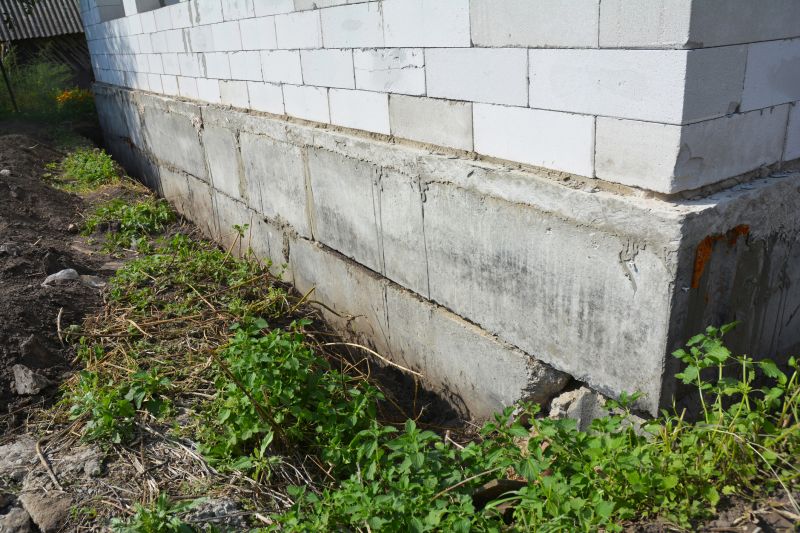Ultimate Guide to Concrete Repair Products for Professionals
Learn about the most reliable materials and tools used by experts to achieve seamless and lasting concrete repairs.
 Concrete repair products are essential for maintaining the integrity and appearance of concrete surfaces, whether in residential, commercial, or industrial settings. These products are designed to address a variety of issues such as cracks, surface scaling, spalling, and other forms of deterioration. Selecting the right repair materials depends on the specific problem, the size and location of the damage, and the desired longevity of the repair. Proper preparation and application are key to achieving durable results, and understanding the different types of repair products available can help homeowners and professionals make informed choices.
Concrete repair products are essential for maintaining the integrity and appearance of concrete surfaces, whether in residential, commercial, or industrial settings. These products are designed to address a variety of issues such as cracks, surface scaling, spalling, and other forms of deterioration. Selecting the right repair materials depends on the specific problem, the size and location of the damage, and the desired longevity of the repair. Proper preparation and application are key to achieving durable results, and understanding the different types of repair products available can help homeowners and professionals make informed choices.
Top Overall Option
Multi-Purpose Concrete Repair Compound
A versatile concrete repair compound that offers easy application for a variety of surface damages. It adheres well to existing concrete, provides durable fills for cracks and holes, and can be sanded or painted over once cured. Suitable for both indoor and outdoor repairs, this product is often favored for its flexibility and ease of use.
Types of Products For Concrete Repairs
Concrete Crack Sealants
Designed to fill and seal cracks to prevent water infiltration and further deterioration.
Epoxy Injection Kits
Used for structural crack repairs, providing strong bonding and reinforcement.
Polyurethane Foam Fillers
Flexible fillers ideal for sealing active cracks and joints that may move.
Concrete Patching Compounds
Pre-mixed or powder-based products for filling larger holes and surface imperfections.
Surface Sealers and Coatings
Protective layers that waterproof and extend the life of concrete surfaces.
Self-Leveling Overlays
Used to create a smooth, level surface over damaged or uneven concrete.
Bonding Agents
Enhance adhesion between old and new concrete layers during repairs.
Hydraulic Cement
Quick-setting material for stopping active leaks and sealing holes.
Fiber-Reinforced Repair Mortars
Provide additional strength and flexibility for structural repairs.
Concrete Resurfacing Products
Apply over existing concrete to restore appearance and surface integrity.
Waterproofing Membranes
Applied to prevent water ingress in below-grade or exposed concrete structures.
Patch Repair Kits
All-in-one kits for quick and easy small-scale repairs.
Popular Choices
Widely used for sealing surface cracks and preventing water penetration.
Commonly selected for structural crack repairs requiring high bonding strength.
Popular for flexible sealing of active or dynamic cracks.
Favored for filling larger holes and restoring surface smoothness.
Often chosen to protect and waterproof concrete surfaces.
Preferred for creating even surfaces over damaged or uneven concrete.
Commonly used to ensure new concrete adheres well to existing surfaces.
Selected for quick sealing of active leaks and cracks.
Chosen for structural repairs requiring added flexibility.
Popular for restoring the appearance of worn or stained concrete surfaces.
For small cracks and surface imperfections, patching compounds and fillers are commonly used. These products typically come in pre-mixed formulations that are easy to apply and cure quickly, making them suitable for quick fixes. For larger cracks or structural repairs, more robust solutions such as epoxy injections or concrete overlays may be necessary. These specialized products provide enhanced bonding and strength, helping to restore the stability of the concrete structure.
In addition to patching and bonding agents, surface sealers and waterproofing coatings play a vital role in protecting repaired concrete from future damage caused by moisture, chemicals, or freeze-thaw cycles. These coatings can extend the lifespan of the repair and improve the overall durability of the surface. When choosing concrete repair products, it is important to consider the compatibility with existing concrete, the environmental conditions, and the anticipated load or stress on the repaired area. Proper application techniques and curing times are also crucial for optimal performance and longevity of the repair work.
Key Buying Considerations
- Identify whether the repair is structural or cosmetic to select the appropriate product.
- Assess the size and depth of the damage to determine the needed repair material type.
- Check compatibility with existing concrete to ensure proper adhesion and performance.
- Consider environmental conditions such as exposure to moisture, chemicals, or temperature fluctuations.
- Evaluate the curing time required for the product to achieve full strength.
- Determine if the product is suitable for indoor, outdoor, or both applications.
- Review the flexibility or movement accommodation of the repair material, especially for cracks that may expand or contract.
- Select products with appropriate bonding strength for the repair scope.
- Ensure the repair product is easy to apply with the tools and skills available.
- Verify if additional surface preparation, such as cleaning or etching, is necessary before application.
- Consider the longevity and durability expectations for the repair work.
- Check for any safety precautions or protective gear recommended during application.
- Look for products that can be painted or finished over if aesthetic considerations are important.
- Compare product compatibility with existing coatings or sealers on the concrete surface.
- Review manufacturer instructions for proper mixing, application, and curing procedures.
